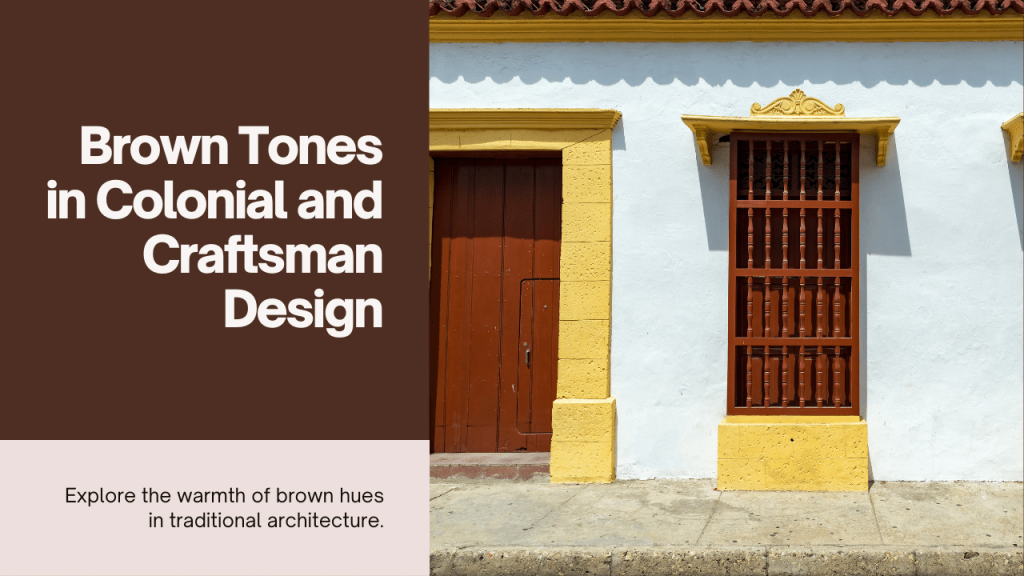Choosing an exterior color for your house is one of the most important steps that contributes to the alteration of the exterior looks of the house. The color that you choose can complement the architectural design, blend with the surroundings, and even make a small house look larger than it is. Below are some guidelines that can assist you in finding your way through the available choices and selecting a color that will blend well with the rest of your house.
Think about the style of your house. Choosing the style of your home was an important decision. The style of a home is its defining characteristic, and choosing a style of home that you don’t like can significantly affect your quality of living and your living space.
Colonial and Craftsman Homes
Some dominant colors for colonial and craftsman designs include browns, tans, warm grays, and greens. Sage, olive, or forest green shutters and trim look best with red brick homes, though deep earth tones like terracotta also work well.
Victorian Homes
Victorian architectural details require deeper hues of what can be referred to as jewel tones and deeper shades of red, purple, green, and navy. Black and white with a touch of gray, is also often seen, while the siding sticks to the lighter neutral trim color with black as the accent.

Modern Homes
Contemporary minimalistic styles are best suited to cool shades of gray, sandy or biscuit, light brown or white. Non-color hues such as steel, gray, or silver, for example, will introduce a new dimension.
Coastal Homes
Soft colors such as ocean blue, seafoam green, sandy beige, and pale gray blue are appropriate, when the house is located on the beachside or coast. Bright white or navy detailing contrasts with soft pastel and sandy tones, ideal for the seaside setting.
Evaluate the Surrounding Landscape
In terms of the choice of exterior color, one must pay attention to the natural environment of the home. This is because the homeowner can find nature-inspired shades that will best suit the surrounding environment of the house.
Woods
Shades of paints such as sage, mossy green, brown, tan, and other similar earth tones are well-suited for wooded lots.
Mountainous Regions
The mountainous zones require a middle-to-dark shade of earth colors as they reflect the color of cliffs, rocks, and evergreens.
Beachfront Properties
Soft and muted shades of blue and green, such as baby blue, sea green, silver-gray, and a very light shade of green, like seafoam, go well with beach environments.
Urban Environments
For city dwellings, it is preferable to use somber tones of gray, beige, brown, or black to mimic the surrounding structures and equipment. Heralded by brief white stenciled messages, pops of color on the front door can bring cheer.
Consider Direction and Light Exposure
Lighting also plays a role in determining the appearance of colors because the way light strikes the exterior of your home is different from the way it strikes any other structure. South-facing sides of buildings may look a little lighter and need darker shades of colors. If there is less exposure to direct sunlight in the rooms, it is possible to paint walls in lighter shades of neutrals.
Utilizing Lighter Colors Will Help Brighten Shaded Areas of a Room
If you have large areas of shade or if your home front faces to the north, then choose softer pastel base colors such as tan, light grey, or soft yellow. Next, use bold colored trim or paint front doors in navy, red, or Kelly green to promote visual interest.

It is possible to use darker colors on the sides of the house, which are exposed to an immense amount of sunlight, because black does not make the interior appear closed off or claustrophobic. With outdoor areas, it is possible to opt for darker tones for the walls and white or neutral trim to keep things bright.
Test Paint Swatches Outside
When choosing between paint samples, it is helpful to paint swatches on the exterior walls and compare them in the morning and evening. The lightness of colors increases and colors seem to be more saturated or brighter when the images are viewed under direct sunlight. Northern walls will read cooler and less dramatic. This way of viewing swatches also makes a lot of sense as it is protective in such a way as to prevent the final color installation from being anything other than a shock.
Selecting a neutral base with colorful accents is an excellent way to brighten up a house and bring joy into the lives of those who live there.
A neutral wall color is your primary field color; it is better to choose neutral as a primary body color, but it is better to use bright color accents for additional trim, shutters, or gates. The light shades of gray, tan, and brown have proven ideal in case one wants to make alterations in the future.
Conclusion
Selecting the right exterior color includes several factors, such as the architectural design of your home, location, lighting, and your preference. Take these into consideration as you try out various swatches to identify the best colors that you can use to complement or improve the looks of your home exterior. The right colors can enhance the exterior appearance of your property and change the aesthetics of the house into a new look you are happy with.

